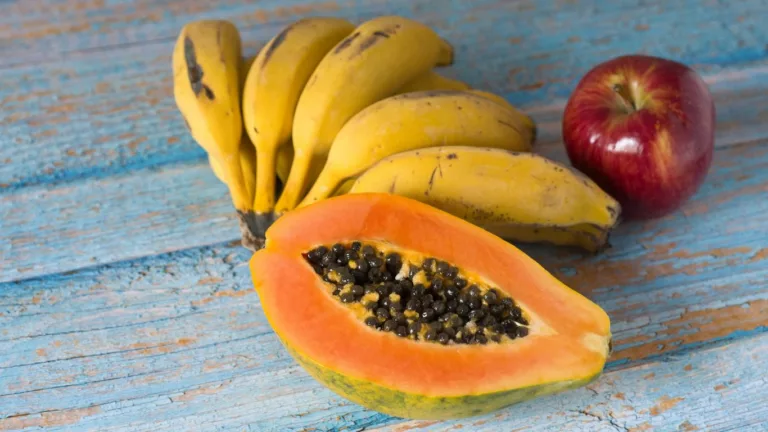Surprising Benefits of Intermittent Fasting for RA Relief
If you’re living with rheumatoid arthritis (RA), you already know how unpredictable and frustrating this autoimmune condition can be. From morning stiffness to flare-ups that seem to come out of nowhere, managing RA often feels like a full-time job. Over the years working as a Rheumatology nurse practitioner, I’ve seen countless patients explore various lifestyle changes to help ease symptoms and improve quality of life. One approach that’s gained quite a bit of attention lately is intermittent fasting. You might be wondering: could RA and intermittent fasting benefits really be connected? Spoiler alert—there’s some promising evidence, and I want to share what I’ve learned along the way.
Intermittent fasting isn’t just a trendy diet fad; it’s a pattern of eating that cycles between periods of fasting and eating. People use it for weight management, metabolic health, and even mental clarity. But for those of us in the rheumatology world, the intriguing question is whether intermittent fasting can actually influence the inflammation and immune responses driving RA.
Understanding RA: More Than Just Joint Pain

Before diving into the fasting benefits, it helps to quickly revisit what RA really is. At its core, RA is an autoimmune disease where the immune system mistakenly attacks the joints, causing chronic inflammation. This results in pain, swelling, stiffness, and, over time, joint damage. But RA isn’t limited to joints — it’s a systemic condition, affecting organs like the lungs, heart, and even your skin.
Managing RA often requires a multi-pronged approach: medication, physical therapy, lifestyle changes, and sometimes surgery. And through my years of practice, I’ve noticed how much patients’ day-to-day choices can impact their symptom control. This is where lifestyle factors like diet and fasting come into play.
The Role of Inflammation in RA and How Fasting Fits In

Inflammation is the hallmark of RA. It’s both a protective immune response and, paradoxically, the cause of joint destruction when it becomes chronic and uncontrolled. Many medications for RA target inflammatory pathways, but they can come with side effects and don’t work the same for everyone.
This is where intermittent fasting might offer an additional benefit. When you fast, your body undergoes metabolic shifts that influence inflammation at the cellular level. Some studies suggest that fasting can reduce pro-inflammatory cytokines — those chemical messengers that drive the immune attack in RA. It’s like hitting a reset button on your immune system.
In my clinical experience, I’ve seen patients report less stiffness and fewer flare-ups after trying intermittent fasting routines. While fasting isn’t a cure or replacement for medication, it can be a helpful complement to traditional RA treatments when done safely and mindfully.
RA and Intermittent Fasting Benefits: What Science Says

The evidence on intermittent fasting for RA is still emerging, but it’s encouraging. Here’s a quick rundown of some key findings:
- Reduction in inflammatory markers: Research shows intermittent fasting can lower levels of TNF-alpha, IL-6, and other inflammatory markers linked to RA symptoms.
- Improved immune regulation: Fasting periods may help recalibrate immune cells, reducing autoimmune activity.
- Weight management: Excess weight often worsens RA symptoms. Intermittent fasting can support weight loss and improve joint load.
- Enhanced cellular repair: Fasting stimulates autophagy, a natural cell cleanup process, which may protect joint tissue.
Of course, these benefits don’t happen overnight. And the fasting protocols vary widely—some people do 16:8 (16 hours fasting, 8 hours eating), others try alternate-day fasting or longer fasts under supervision. The best approach depends on your individual health status, lifestyle, and preferences.
Personal Experience: What I’ve Seen with Patients
Over the years, I’ve had many patients curious about intermittent fasting but hesitant because of concerns about energy, medication timing, or managing symptoms. What I always emphasize is this: listen to your body and discuss any changes with your healthcare team.
One patient, for example, started with a gentle 12-hour overnight fast and gradually increased it to 16 hours. After a few months, she noticed fewer joint flare-ups and better morning mobility. Another found that fasting helped her lose weight, which reduced strain on her knees and improved her overall activity levels.
Intermittent fasting isn’t a one-size-fits-all fix, but it’s a promising tool in the toolbox for RA management. And as a nurse practitioner who’s walked alongside many patients, I love seeing people empowered to take control of their health through informed choices.
How to Start Intermittent Fasting When You Have RA

Let’s be real—starting something new like intermittent fasting can feel overwhelming, especially when you’re already juggling RA symptoms, medications, and energy dips. But you don’t have to go all-in from day one. In fact, I usually tell my patients to start small and adjust as needed. The key is to make it sustainable and gentle on your body.
Here are a few friendly tips I share based on my clinical experience and conversations with patients:
- Start slow: Begin with a 12-hour overnight fast—say, from 7 PM to 7 AM. You’re mostly sleeping through it, and it’s a great way to ease into the routine.
- Stay hydrated: This is huge. Dehydration can make you feel sluggish and may even worsen joint discomfort. Water, herbal teas, and broths are your best friends during fasting hours.
- Time medications carefully: Many RA meds need to be taken with food. This is where your rheumatology provider comes in—don’t adjust without a conversation first. I’ve helped several patients shift dosing schedules to make fasting easier.
- Listen to your energy levels: If you’re exhausted or feeling worse, don’t push it. You can always try again later or tweak your eating window to better suit your needs.
I had one patient, a super active 60-something with seropositive RA, who found the 14:10 fasting schedule ideal. She ate between 9 AM and 7 PM and found she had better control over her sugar cravings and less joint stiffness in the mornings. She even reported fewer mid-day crashes, which is something we don’t often associate with RA management but can really impact quality of life.
What to Eat During Your Eating Window Matters, Too

Let’s not forget—it’s not just when you eat, but what you eat that plays a big role. Intermittent fasting can absolutely reduce inflammation, but if you’re breaking your fast with ultra-processed snacks and sugar-loaded drinks, you’re not exactly helping your immune system calm down.
In my own clinical approach, I emphasize anti-inflammatory foods to complement fasting. Think of your plate as medicine:
- Colorful veggies: Rich in antioxidants that help fight oxidative stress
- Omega-3 fats: Fatty fish like salmon, walnuts, flaxseeds—they’re like a natural anti-inflammatory prescription
- Whole grains: Quinoa, brown rice, oats—they help stabilize blood sugar and support gut health
- Fermented foods: A happy gut = better immune regulation. Think yogurt, kimchi, sauerkraut
One of my patients shared a fun tip: she preps “RA-friendly bowls” with leafy greens, roasted veggies, a protein like grilled chicken or lentils, and a tahini drizzle. Quick, delicious, and gentle on the joints.
Also, don’t underestimate the power of consistency. A nutrient-rich eating window combined with fasting can create a positive rhythm for your metabolism and inflammation control. And when you stick with it—even loosely—you’re setting your body up for success.
RA and Intermittent Fasting: Real-Life Challenges and Solutions

Now, I’d be sugarcoating it if I said intermittent fasting is all sunshine and symptom relief. There are challenges. RA isn’t linear—it flares, it retreats, it surprises you. Fasting with RA comes with some trial and error.
Here are a few common hiccups I’ve seen, and how folks have worked around them:
- Morning stiffness and fatigue: If you’re someone who feels especially rough in the mornings, pushing breakfast too far back might not work. Try a modified fast, like a nutrient-dense smoothie early in the window, then resume fasting later in the day.
- Medication timing conflicts: Some biologics or steroids absolutely need food. Work with your provider (like me!) to find a fasting pattern that aligns with your medication routine.
- Energy dips or brain fog: These are usually temporary, especially in the first week or two. But if they linger, that’s a sign to reassess. Fasting should support your body, not deplete it.
One of my patients with RA and type 2 diabetes actually adjusted her fasting plan every few weeks based on her pain and glucose levels. Her flexibility was the key to her success—she didn’t follow a rigid schedule but stayed within a healthy rhythm that worked for her day-to-day life.
And that’s what I love seeing most: when people take ownership of their health journey, armed with good information and support. It’s not about perfection—it’s about progress, empowerment, and giving your body what it needs to heal and thrive.
Consult Your Healthcare Team Before You Begin
As much as I love the enthusiasm around fasting and RA, I always say this—don’t go it alone. If you’re on immunosuppressants, steroids, or have other health conditions, your body may respond differently to fasting.
Make sure to:
- Discuss your plan with a rheumatology provider or dietitian
- Track your symptoms and food intake for the first few weeks
- Adjust as needed based on energy, inflammation levels, and overall well-being
In my practice, I often work side-by-side with registered dietitians to help patients tailor fasting plans that respect their meds, personal routines, and food preferences. It’s all about building a framework that works for you, not following a strict rulebook.
Long-Term Impact of Intermittent Fasting on RA Symptoms

Once you’ve settled into a fasting rhythm that works for you, the real magic often happens over time. I’ve had patients stick with intermittent fasting for months, and the stories they’ve shared—less joint swelling, better sleep, improved mood—are seriously inspiring. It’s not just a temporary tweak; for many, it becomes a foundational part of their lifestyle.
One of my longtime patients who’s been dealing with RA for over a decade told me that intermittent fasting gave her a “sense of control” she hadn’t felt in years. Her flares didn’t vanish completely, but they became milder and less frequent. She also lost some weight, which eased the burden on her knees and hips.
From what I’ve seen in practice, the long-term benefits of intermittent fasting for RA often include:
- Reduced disease activity: Patients report less joint swelling and tenderness over time.
- Fewer medication side effects: Some find they can lower steroid doses (under supervision, of course), which reduces long-term risks.
- Improved mental clarity: A calmer immune system seems to benefit cognitive function, too—less “RA brain fog.”
- Better overall energy: With reduced inflammation and improved sleep, energy levels often bounce back.
It’s important to keep expectations realistic, though. Fasting isn’t a miracle cure. It’s a lifestyle tool that can support your treatment plan—not replace it. But for those who find a groove with it, it’s empowering and often transformative.
My Go-To Resources for Patients Exploring Fasting

Whenever I introduce fasting to my patients, I always point them toward evidence-based resources. There’s a ton of info out there (some of it great, some of it… not so much). So here are a few solid places I trust and often refer folks to when they’re starting this journey:
- National Institute on Aging – Great insights on the science behind fasting and cellular health.
- American College of Rheumatology – Offers updated guidance on RA management and patient tools.
- National Center for Complementary and Integrative Health – Research-backed info on nutrition, fasting, and alternative approaches.
I also suggest patients keep a journal—just a simple notebook or notes app—to track how they feel each day. That little practice can help you spot trends, adjust fasting windows, and communicate more clearly with your care team.
RA and Intermittent Fasting Benefits: Wrapping It All Together
Here’s the bottom line from where I sit, both professionally and personally: intermittent fasting has some real potential in the world of RA management. It’s not about starving yourself or chasing the latest wellness craze. It’s about aligning your eating patterns with your body’s natural rhythms—and giving your immune system a little breathing room.
When patients ask me, “Should I try intermittent fasting for my RA?” my answer is almost always: let’s explore it together. With the right guidance, a flexible mindset, and a little patience, many people do find relief and renewed energy. I’ve watched it happen firsthand, and it never gets old.
As always, though, this approach isn’t for everyone. If you have other health conditions—diabetes, adrenal issues, or eating disorders—fasting might not be the best fit. But if your body responds well and your routine allows it, the potential upsides are pretty exciting.
At the end of the day, RA management is a deeply personal journey. It’s about tuning into your body, trying new tools with curiosity, and finding what makes you feel your best—not just in your joints, but in your whole self.
Disclaimer
This article is for informational purposes only and is not intended to replace medical advice from your healthcare provider. Always consult with your rheumatologist or healthcare team before making changes to your diet, medication, or lifestyle.

Tarra Nugroho is a dedicated Nurse Practitioner with a strong foundation in family and preventive care. She brings both compassion and clinical expertise to her practice, focusing on patient-centered care and health education. As a contributor to Healthusias.com, Tarra translates medical knowledge into clear, empowering articles on topics like women’s health, chronic disease management, and lifestyle medicine. Her mission is simple: help people feel seen, heard, and informed—both in the clinic and through the content she creates. When she’s not caring for patients, Tarra enjoys weekend hikes, plant-based cooking, and curling up with a good health podcast.






